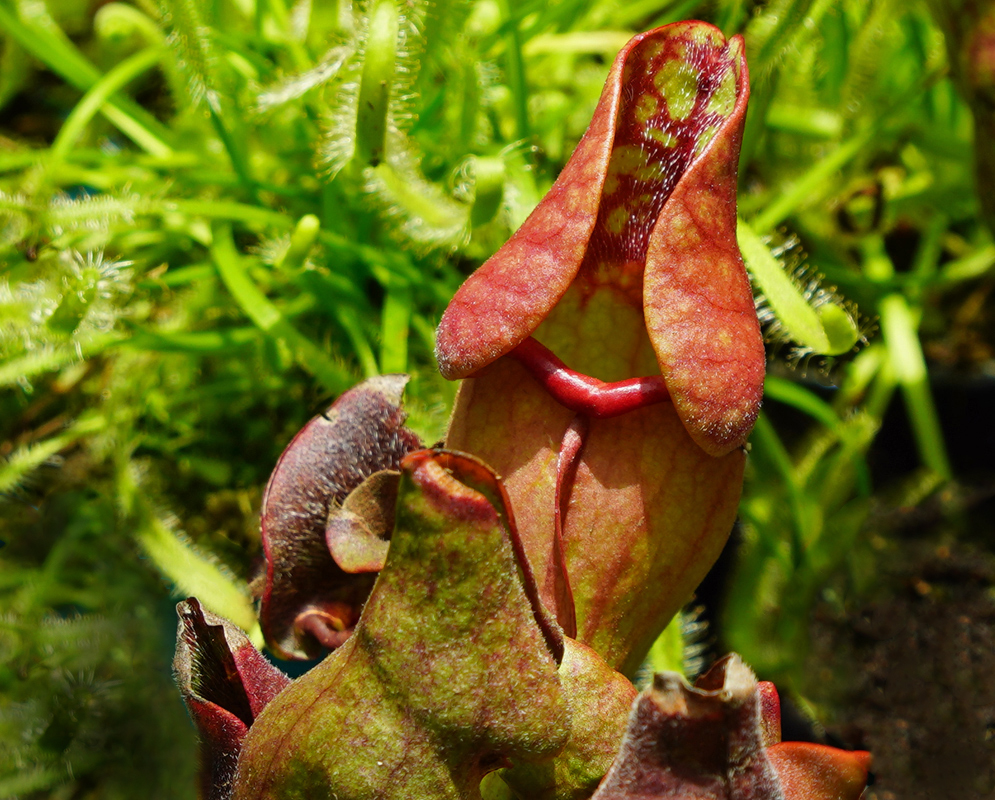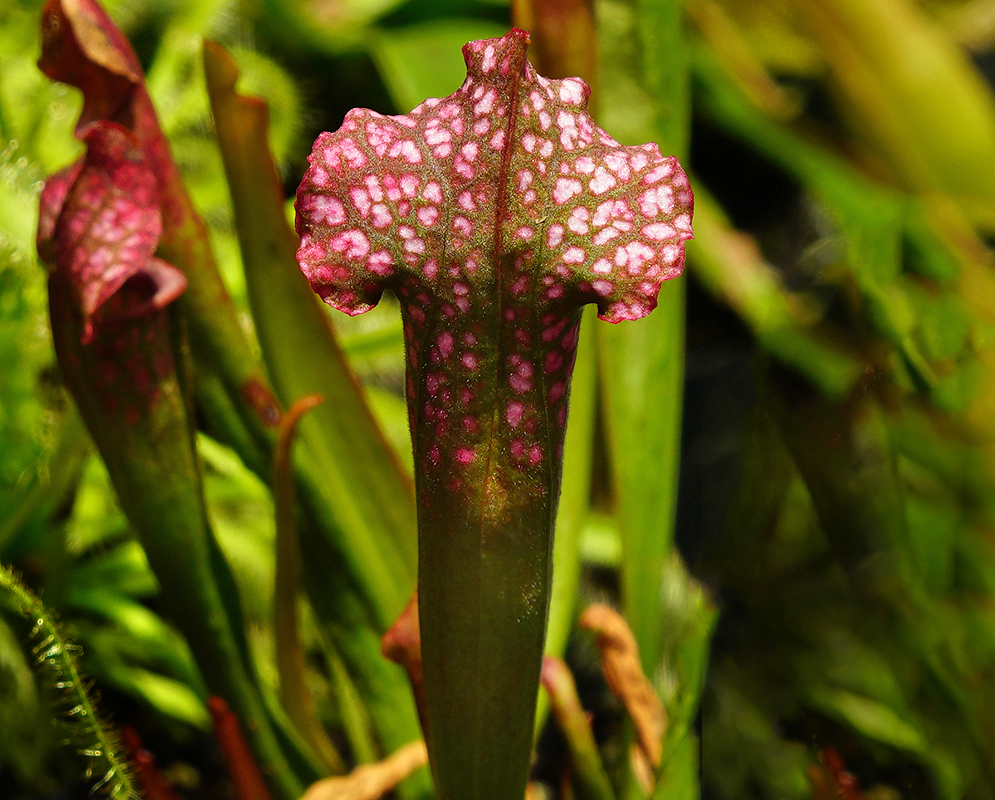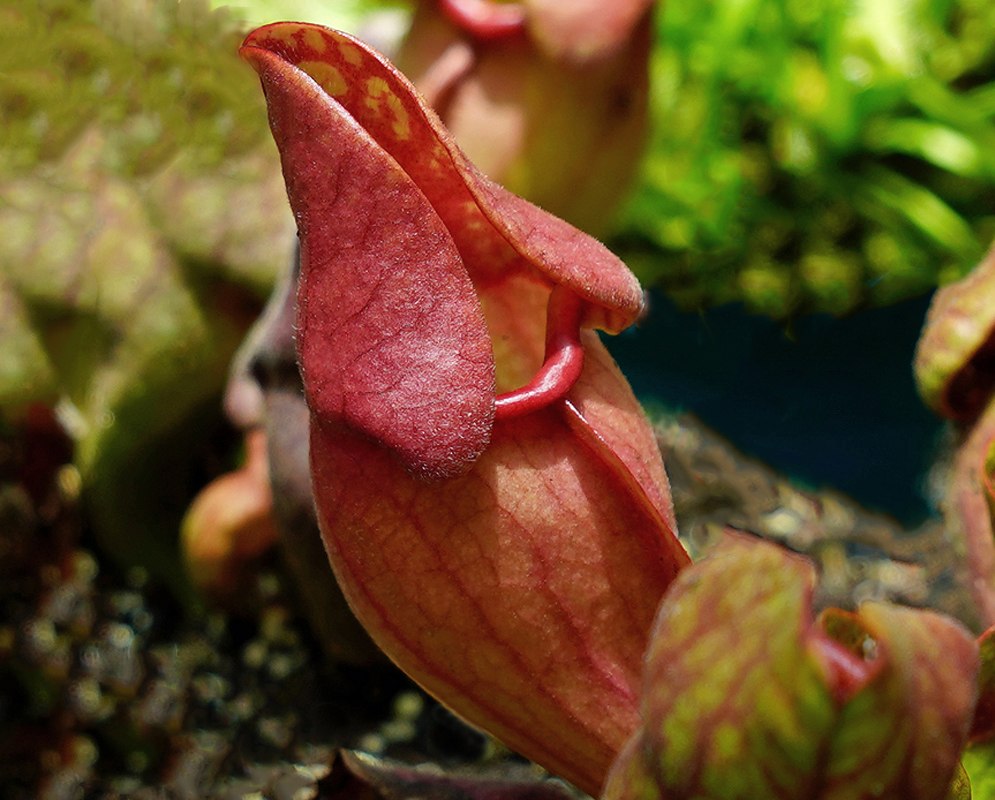This post has 11 Simple Fields-fields attached. Show fields.

Native to the nutrient-poor, acidic bogs of North America's Eastern seaboard, Great Lakes region, parts of Canada, Washington state and Alaska. A carnivorous plant that captures prey to supplement its diet. It's unique among its genus for inhabiting cold temperate climates and has the broadest distribution of all pitcher plants, even serving as the floral emblem of Newfoundland and Labrador. This plant is distinguished by its prey capture mechanism, which, although inefficient, with less than 1% of visiting prey trapped, still results in pitchers filling with insects and occasionally juvenile spotted salamanders during the warm months. The captured fauna are digested with the help of a community of invertebrates and bacteria that reside within the pitcher, utilizing enzymes such as hydrolases and proteases. Photographed in Armenia, Colombia.





